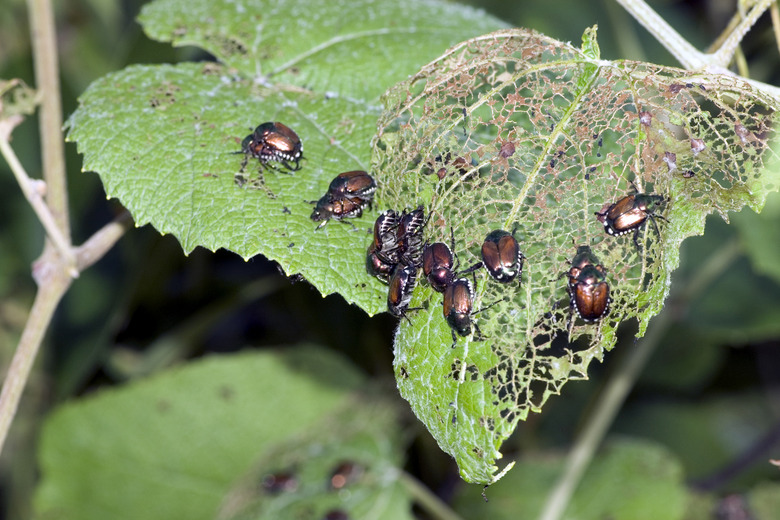What Types Of Bugs Or Insects Eat Flowers?
Some insects that prey on flowers prefer hot, dry conditions, while others like cold, wet conditions. But all are scavengers by nature and are attracted to unhealthy plant material, such as diseased or decaying fruit and leaves.
Some insects that prey on flowers prefer hot, dry conditions, while others like cold, wet conditions. But all are scavengers by nature and are attracted to unhealthy plant material, such as diseased or decaying fruit and leaves. Nevertheless, only a small percentage of garden insects — about 3 percent — cause damage to plants and a smaller percentage still eat flowers. So before you spray every bug in sight with pesticide, you should identify those that cause the most damage.
Aphids
Aphids (Hemiptera order) are tiny, soft-bodied insects of various colors up to 1/8 inch in length. Aphids thrive in warm, moist conditions and prey on flowers, preferring those yellow in color. A problem with aphid infestation may go hand in hand with the presence of ants, which harvest the honeydew — a clear, sticky liquid excreted by aphids — and carry the insects about from plant to plant. Annual herbs cilantro (Coriandrum sativum) and dill (Anethum graveolens) repel aphids, as does fennel (Foeniculum vulgare), hardy in U.S. Department of Agriculture plant hardiness zones 4 through 9. Annual nasturtiums (Tropaeolum spp.) and marigolds (Tagetes spp.) also repel these insects.
- Some insects that prey on flowers prefer hot, dry conditions, while others like cold, wet conditions.
- A problem with aphid infestation may go hand in hand with the presence of ants, which harvest the honeydew — a clear, sticky liquid excreted by aphids — and carry the insects about from plant to plant.
Thrips
Thrips (Thysanoptera order) are even smaller than aphids, about 1/25 inch in length, and therefore are difficult to see without a magnifying glass. Despite their tiny size, thrips can be hugely destructive to flowers. They are black or straw-colored and, like aphids, show a marked preference for pale colored flowers, such as white or yellow. Thrip damage to maturing flowers, flower buds and other plant tissue is characterized by dry, pale or dark spots, caused by the insects sucking nutrients from the plant.
Other Pests
The Japanese beetle (Popillia japonica) causes major damage to flowers and flower buds of many ornamental plants. About 3/8 inch in length, it has a dark, metallic green head and dark, metallic tan wing cases. The tarnished plant bug (Lygus lineolaris), a mottled brown insect 1/4 inch in length, and the fourlined plant bug (Poecilocapsus lineatus), a bit larger and identified by four black stripes on its back, cause similar problems. Early flowering plants are particularly susceptible to attack. The European earwig (Forficula auricularia) is normally considered beneficial to flower gardens, because it feeds on harmful insects and their eggs. If abnormal weather conditions cause the earwig population to explode, earwigs can damage flower blossoms just as much as more obvious pests.
- Thrips (Thysanoptera order) are even smaller than aphids, about 1/25 inch in length, and therefore are difficult to see without a magnifying glass.
- The European earwig (Forficula auricularia) is normally considered beneficial to flower gardens, because it feeds on harmful insects and their eggs.
